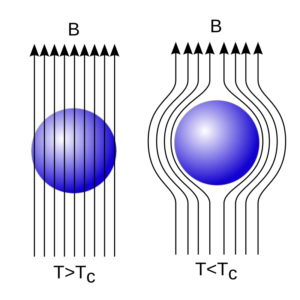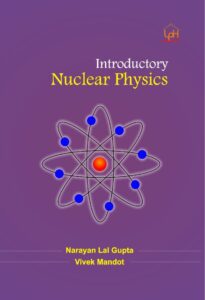Meissner effect
According to Meissner effect, a superconductor become a perfect diamagnet on cooling it below a critical temperature (T < Tc, depends on material) and it there is any magnetic field in superconductor then the magnetic field line is expelled.
Reason :
A material gets superconducting state on cooling it below its critical temperature. During the transition to superconducting state, the surface currents are generated on the superconductor and it create a magnetic field. This magnetic field exactly cancels the external magnetic field inside the material.

- Due to this expulsion of magnetic field, a superconductor become a perfect diamagnet. It means the magnetic susceptibility of the material become -I, and it expels any magnetic field from its interior. It is found that the magnetic field at surface is not completely zero, it decays exponentially over a very short distance (London penetration depth), which is ranges from 20nm to 40nm. In fact, expulsion is an active process; if the superconductor is cooled in a magnetic field, the field is expelled, and if the field is applied after the material has become superconducting, the field is kept out entirely.
- Since on heating the material above its critical temperature, the magnetic field will penetrate the material again, and it will return to its normal state, and therefore the Meissner effect is reversible.


